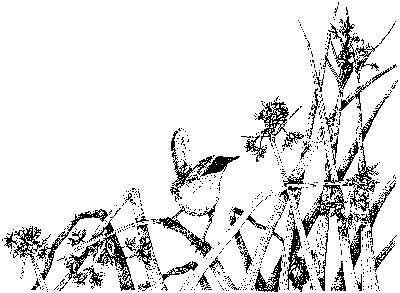


Living Lightly
![]()
Rivers of Birds, Forests of Tules: Central Valley Nature & Culture in Season
By Lillian Vallee
26. Voice of the San Joaquin, on the Rise
Early this semester, Modesto Junior College’s Civic Engagement Project Committee organized a symposium on reviving the San Joaquin River called “Singing Back the River.” The audience listened to information about California’s second largest river with astonishment: ninety-two percent of the river’s water is diverted into two canals that transport the water to Madera, Tulare and Kern counties and never makes it into the riverbed; the eight percent that does dries up after a thirty-mile run. The map is a liar when it comes to the San Joaquin River: what appears to be a living river on the map is water pumped from the Delta, agricultural drainage and runoff, and the water from other Valley rivers like the Merced, Tuolumne and Stanislaus, which must then bear the unfair burden of flushing salts out of the Delta.
Lloyd Carter, the charismatic first speaker, entitled his lecture “Water as the New Cash Crop” because not only does high-quality San Joaquin river water never reach the length of its own watershed, the water (subsidized by our tax dollars to grow food) is often stored in water banks by those who defend their water rights in order to eventually sell them for a profit in Southern California. The Los Angeles Metropolitan Water District, whose speculative and vampiric water history is well known (it tried to drain the feeder creeks of Mono Lake and continues to drain the entire Owens Valley, the Colorado River, its own Los Angeles River, the Feather River and other water sources in Northern California), is still on the prowl for better tasting tap water and looking to buy Central Valley farmers’ water rights. Richard Anderson reminded us during of a saying attributed to Mark Twain: “In California liquor is for drinking and water is for fighting over.”
Another excellent speaker, John Cain, took us on a Google Earth flight over the course of the San Joaquin and demonstrated how one of the historic Chinook salmon runs could be revived because the fish spawned at the base of Friant Dam, not above it. He also showed us how there were salmon still attempting to swim upriver and holding in pools of cool, deep groundwater that persisted in reaches of the San Joaquin. The river, as it exists now, has two dry stretches, making it impossible for salmon to pursue their epic runs.
The Save the San Joaquin River Coalition, which includes farmers, fishermen, river-keepers, and water agencies, among others, argues that only a small fraction of the overall regional water supply is needed to restore the river, water which could be made available through simple water management strategies combining conservation, recycling and more effective storage methods:
Some say the San Joaquin River must remain dead to have a strong farm economy in the southern San Joaquin Valley. But that is a false choice. Experience teaches us that salmon and healthy farm economies can co-exist. On the Stanislaus, Tuolumne and Merced rivers, water is managed in a way that supports both salmon and farms. The same can happen on the San Joaquin.
I bring up the symposium after the fact because of a phone call I received from Lynn Hansen, the second speaker in the symposium. Lynn had lectured on teaching elementary school children about local rivers, specifically the Tuolumne, for which Lynn had helped develop a curriculum. She showed slides of children’s faces as they measured river flow, identified (rubber) animal scat, and observed plants and wildlife in riparian corridors. Salida Elementary School children ended the program by reading poems about their observations and feelings during these science activities. The impression that stayed with audience members was how alive these children looked, radiant in their growing understanding of the workings of the world.
With the unusual amount of rainfall in the Valley, the San Joaquin River has been reoccupying some of its historic bottomlands and making a good case for establishing river corridors and wetlands as permanent buffer zones. Lynn had called to say, “Wow, singing back the river really seems to be working.” We chuckled but knew that, in spite of the Fresno court’s ruling on the river’s behalf in August, there was still a struggle going on, out of court, and that special interests were flexing every functioning political muscle. For the river to be resurrected, an entire chorus of people would have to sing, to the river and to their Congressional representatives.
I was at the San Joaquin National Wildlife Refuge yesterday, under turbulent canopies and caravans of rain-bearing clouds, cumulonimbus and stratocumulus, whose names mimic thunder and disguise the fact that clouds are nothing but rivers on the move, water returning to land as rain or snow. Under the dynamic Central Valley light show, always heartrending in its beauty, freshwater pelicans were enjoying the quiet expansion of the river into bays, backwaters and lagoons, while kettles of hawks picked off the voles, mice and rabbits flushed out of their burrows by rising water. In wet years the river gets in our way, slows us down, and gives us a chance to be cloud-watchers, to live, for a moment, in awe, in the presence of mystery inextricable from sacrifice.
I hope the river can be brought back the same way it was destroyed, through human agency, but what I kept thinking about yesterday, faced with the power and poetry of water moving in a circle, cleansing the land, were the words of another speaker MJC had sponsored over a decade ago. Garrison Sposito, professor of Soil Science at the University of California, Berkeley, cautioned us about living in the most sophisticated plumbing works erected in human history. Our engineering genius lacked the intelligent humility—hallmark of native peoples—that comes from accommodation to the forces of nature and recognition of our own limitations. “Nature bats last,” he said, “remember that.”
Source: www.SavetheSanJoaquin.org

![]()

![]()
